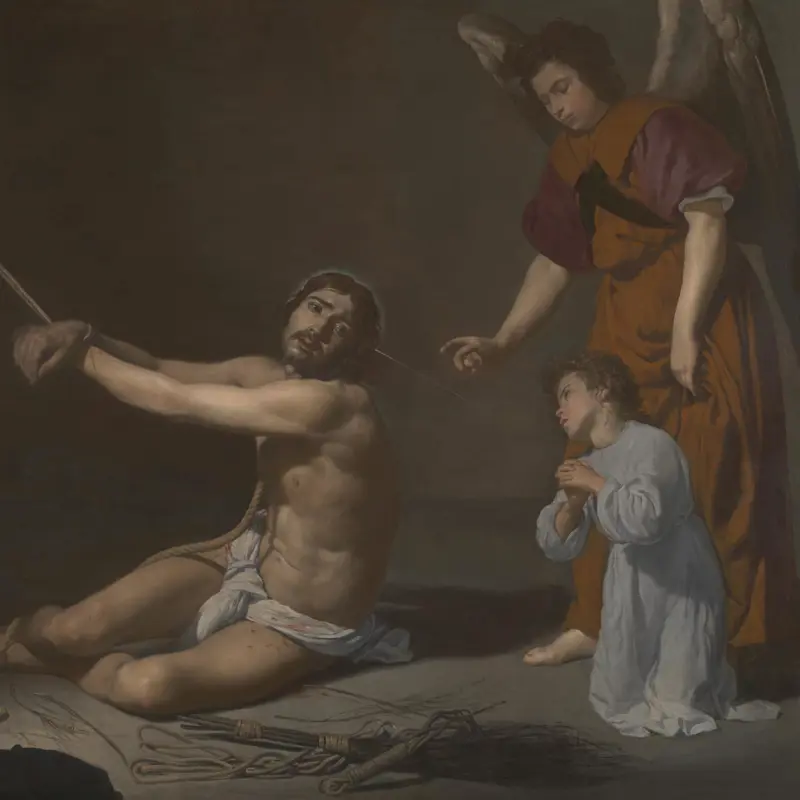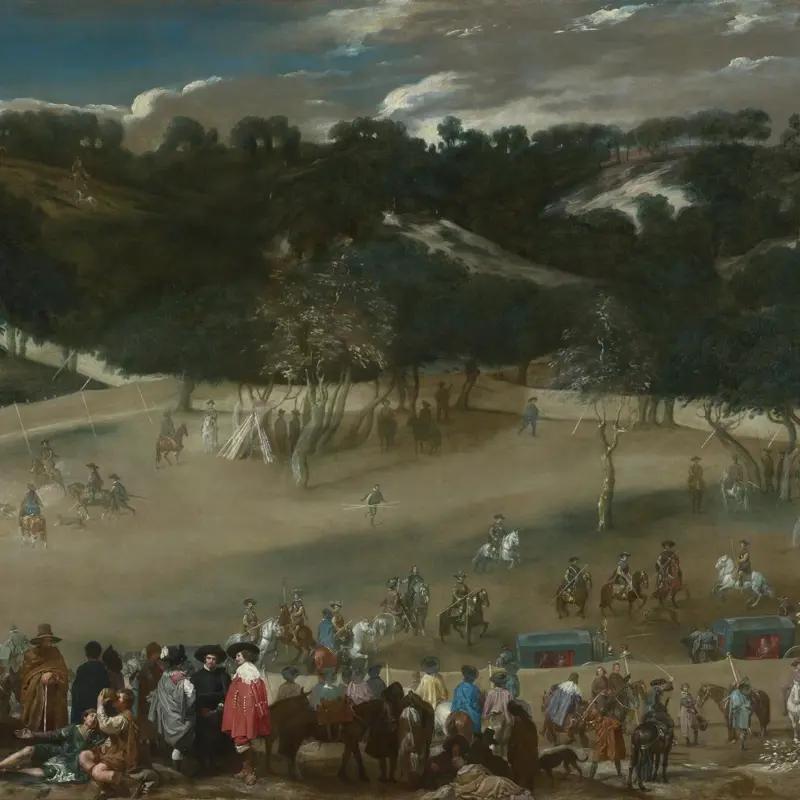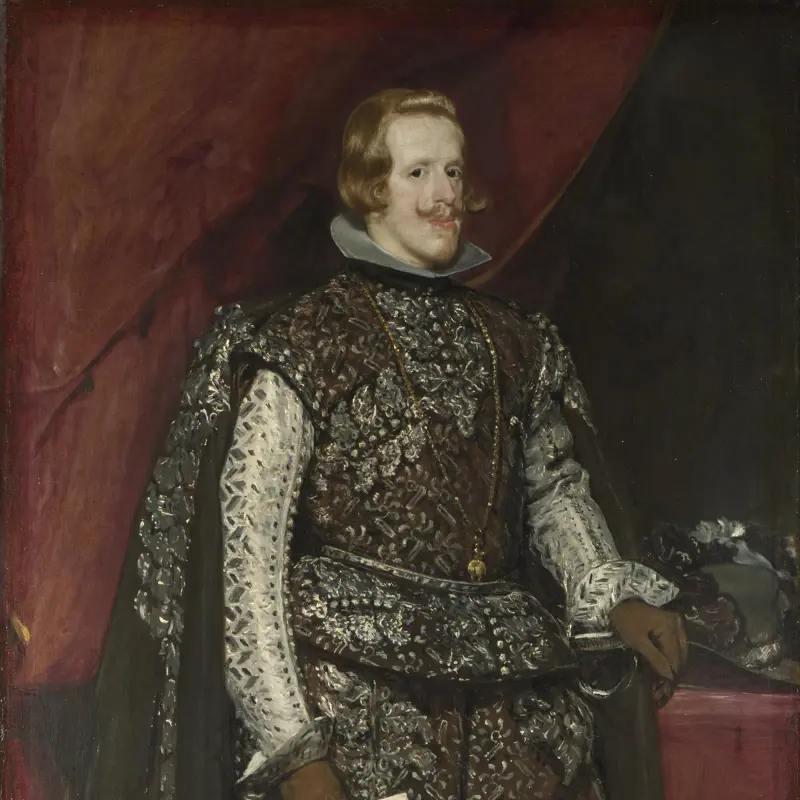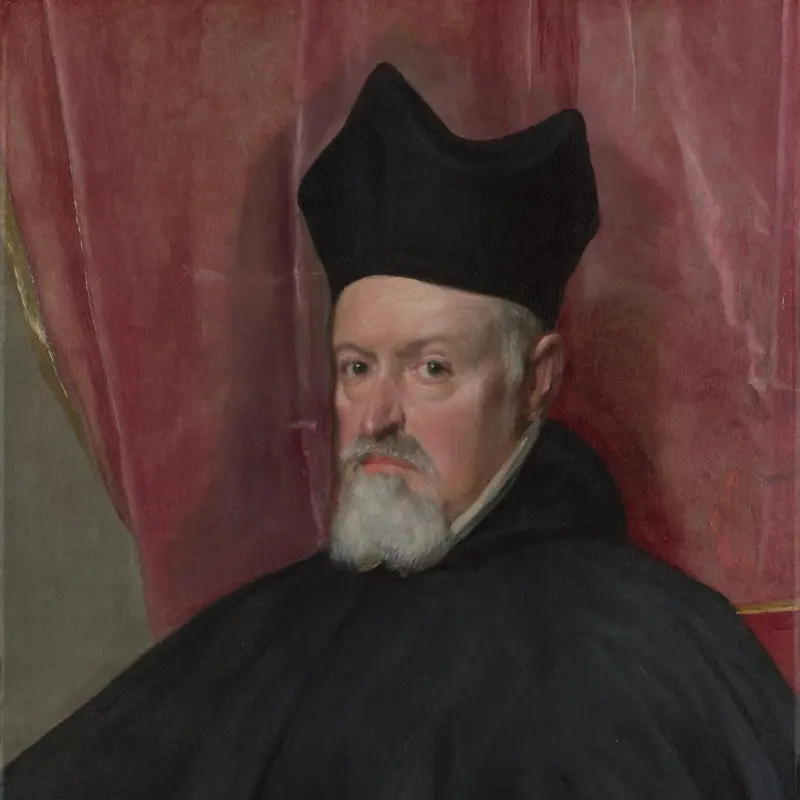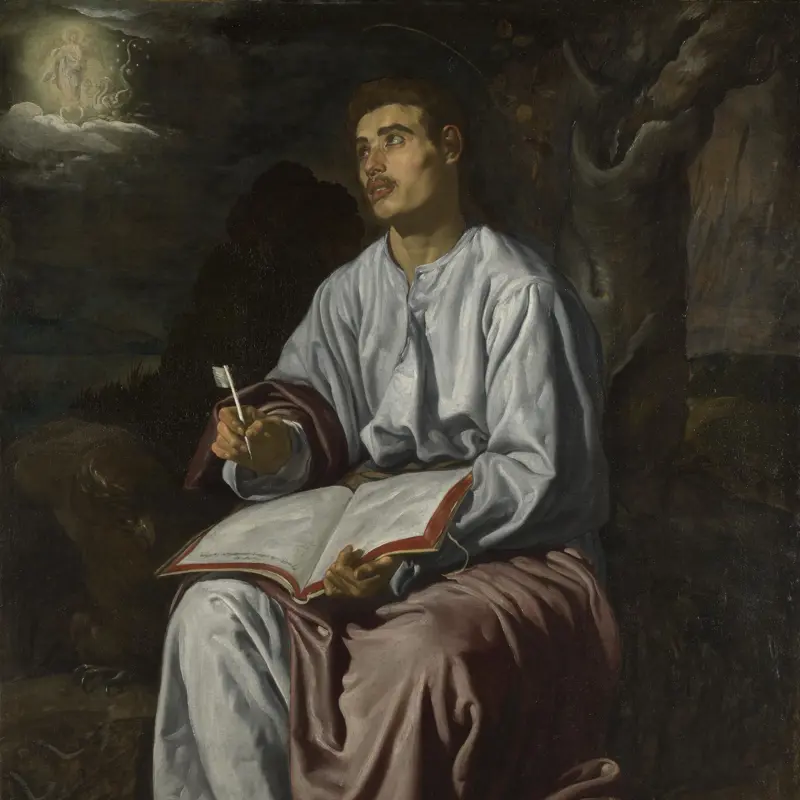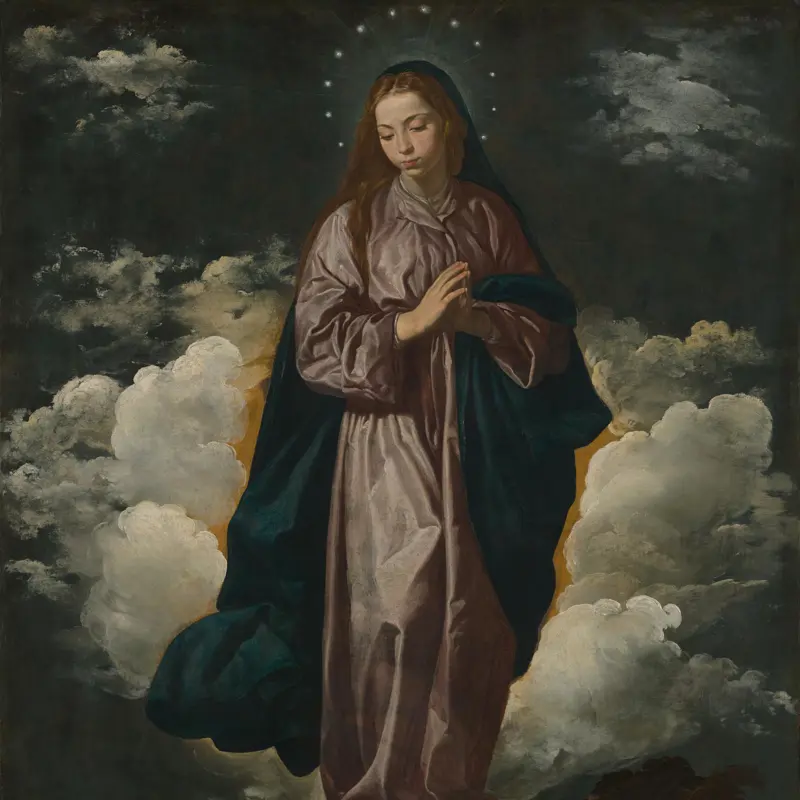Seville
Velázquez was born in 1599 in Seville in southern Spain, at that time an important city with a thriving artistic community. At the age of eleven, Velázquez was apprenticed to Francisco Pacheco, Seville's most significant artist and art theorist.
From Pacheco, Velázquez learned the technical skills of drawing and painting, still-life and portraiture and soon surpassed his master. Unlike the more traditional Pacheco, he responded to the techniques of modern innovators such as Caravaggio. (Caravaggio was famous for his dark, dramatically lit works and un-idealised models. Copies of his paintings spread all over Europe.)
In 1617, Velázquez finished his apprenticeship and was granted the right to set up his own studio. A year later, he married Pacheco's daughter Juana and by 1621, the couple had two daughters.
During his early years in Seville, Velázquez produced traditional religious works such as The Immaculate Conception or Saint John the Evangelist on Patmos, and 'bodegones' - literally 'tavern scenes' or paintings of everyday life. Occasionally, and more unusually, he combined the two. His picture of Christ in the House of Martha and Mary is a kitchen scene, but on the back wall is a hatch revealing Christ addressing Mary in the background.
The rise to court artist
In 1623, thanks to his father-in-law's connections, Velázquez was asked to paint a portrait of the young King Philip IV. Philip was so delighted with the result that he immediately appointed Velázquez as one of his court painters, and from then on would allow no one else to paint him.
The move to the royal court in Madrid allowed Velázquez access to the impressive royal collection. Velázquez studied the Italian paintings, particularly those by Venetian artists such as Titian. When Rubens arrived in Madrid on a diplomatic mission in 1628, the two artists became well acquainted. In 1629, Velázquez obtained permission to visit Italy himself and study Italian painting. He also sought out new paintings to buy on behalf of the King.
The National Gallery's Christ Contemplated by the Christian Soul was painted shortly after his return in 1631. Its loosely painted technique shows a distinctly Venetian influence.
High office
Velázquez was not just successful as a painter. From his arrival he had continued to rise up the ranks in the royal household. In 1636 he was made Assistant to the Wardrobe - a position of trust and responsibility.
He continued to be busy with commissions however, producing paintings for the new Palacio del Buen Retiro, and other residencies. A large proportion of his work was made up of royal portraits of the king and his family including the queen, their children, and their court jesters and dwarfs.
In 1643 Velázquez was promoted again, to Gentleman of the Bedchamber. He was also made superintendent of the palace works. In 1647 he was put in charge of a project to modernise the old Alcázar palace.
In 1649 Velázquez made a second journey to Italy to buy paintings and keep himself up-to-date with developments in Italian art. While there he painted several portraits, including one of Pope Innocent X. He also had an affair resulting in an illegitimate child which considerably delayed his return to Spain - much to the king's annoyance. While there, he also painted the famous Rokeby Venus for an important Spanish nobleman, the Marques de Eliche.
The Golden Age
The 17th century was the 'Siglo de Oro' or 'Golden Age' for art and literature in Spain. Velázquez painted while Cervantes wrote 'Don Quixote' and Lope de Vega wrote his plays. This was despite the religious and political wars that drained the Spanish economy, and the devastating outbreaks of plague.
Velázquez was promoted to increasingly senior administrative positions which left him less time for painting. His son-in-law, Juan Bautista Martinez de Mazo became increasingly involved in helping out by making official copies of his pictures.
Velázquez's close relationship with the king and his family continued. Having created a group of mythological scenes for the Alcázar palace, the artist's last years were mostly taken up with royal portraits such as the Gallery's Philip IV of Spain. In his most famous work, 'Las Meninas' (The Maids of Honour) he shows himself at work in the court.
In 1658 Velázquez was made a Knight of Santiago. It was an honour he had always desired and his badge of office has been added to his self-portrait in 'Las Meninas'. Two years later, in 1660, he fell ill and died, followed by his wife just a week later.

